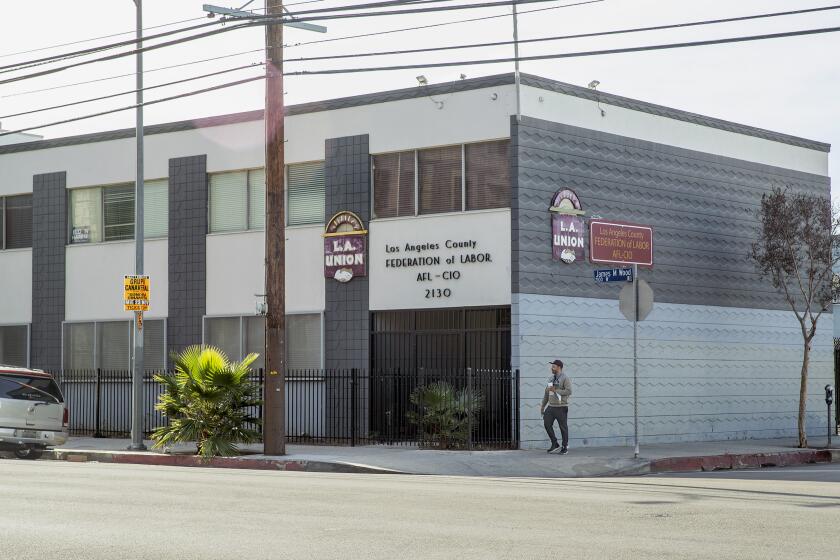Deregulation Foes Pointing to California
If nothing else, California’s two-year experience with electricity deregulation is a warning to Wisconsin.
They’re polite about it in Madison. “You don’t like to be excited about somebody’s misfortune,” said Nikki Anderson, project manager of the Customers First! Coalition.
“But it’s the I-told-you-so story we’ve been waiting for,” she said. “It’s a textbook example of all the concerns we’ve had all along about deregulating.”
Most of the 26 states that have opened their electricity markets to competition share certain woes, but California--the first and biggest state to deregulate--tipped the misery scale this summer with high prices, political bickering, frantic calls for conservation and threatened blackouts.
With the jury still out across the nation on the desirability of deregulation, California has become a red flag for states that are considering it and a reason to gloat for others.
“We’re pretty proud of what we’ve done, and it’s worked out terrifically,” said Pennsylvania Public Utility Commission Chairman John Quain. His state deregulated shortly after California, in 1996. Last week he savored a new study showing that Pennsylvania’s monthly electricity bills have dropped an average of 3% since deregulation, for a $3-billion saving.
This month, California got a new report on deregulation. It showed that utility companies will pay several billions more for electricity this year than last, and next year possibly even more.
So far, California’s two biggest utilities are absorbing the higher costs because their customers are protected until March 2002 by a rate freeze. But the 1.2 million customers of San Diego Gas & Electric now pay the full market price of electricity, and this summer those prices quadrupled.
Political backlash is building. Lawmakers say they fear businesses will close and low-income elderly people will die of heat exhaustion in San Diego because they cannot afford air conditioning. They have called for federal investigations, price caps and rate freezes. Some consumer activists foresee the beginning of the end for deregulation in California.
“At the end of the day, there’s not going to be anything left of [it] except an experiment that was tried and failed,” said Harvey Rosenfield, president of the Foundation for Taxpayer and Consumer Rights.
Economists and industry experts say it’s too soon to judge whether deregulation will deliver lower rates, customer choice and innovation--or higher prices, transmission problems and electricity shortfalls.
“The $64,000 question--maybe you should say $64-million question--is: Was this a mistake, deregulation in general?” said Ken Rose, senior economist with the National Regulatory Research Institute in Columbus, Ohio, a think tank.
Other states have had troubles similar to California’s. The monthly electricity bills of some New Yorkers jumped 40% this summer. In the Midwest in June 1998, the shutdown of several power plants plus a heat wave drove wholesale electricity prices high enough to bankrupt power marketers.
In the Pacific Northwest, an estimated 2,000 sawmill, mine and aluminum plant workers were laid off this summer because their employers shut down rather than pay skyrocketing electricity bills.
It’s worth asking whether the problem is deregulation itself, said Rose, or botched implementation. “I don’t think anybody has the answer,” he said.
Many experts agree. James J. Hoecker, chairman of the Federal Energy Regulatory Commission, is in a unique position to appreciate the differences in each state’s approach. His agency has the power to set prices for wholesale electricity--something for which California politicians have been pleading unsuccessfully this summer.
Hoecker said the 1996 deregulation law, which the California Legislature passed unanimously, is by far the most complicated and sweeping approach by any state.
“California leaped ahead . . . but they also made a whole lot of decisions about how the market was going to develop,” he said.
Hoecker praised Gov. Gray Davis’ attempts last week to lower bills in San Diego by stretching payments over a year or more. He noted that the federal regulatory commission has tried to accommodate California’s troubled transition by approving price caps on last-minute purchases of wholesale electricity. But such measures are not a long-run solution, Hoecker said.
“I think what this illustrates is how difficult it is to legislate . . . the fundamental economic arrangements in a market--for anything,” Hoecker said.
Close observers of California say the biggest problem here is that the volume of electricity the state can produce has stagnated for a decade while demand--the result of a booming digital economy--has risen fast. Through the 1990s, utilities and power companies chose not to invest hundreds of millions of dollars in building new power plants until it was clear whether and how California would restructure its markets.
Experts say prices should drop and the threat of blackouts on hot summer days should ease over the next several years, as new power plants pump more electricity into the high-voltage grid.
Ideally, California would have balanced its supply and demand problems before diving into deregulation, some experts say, just as Wisconsin decided it needs to string more high-voltage lines before it can even consider a free market for electricity.
Don Hatley, vice president of governmental affairs for North Carolina’s Duke Energy, said deregulation seems to work best where an adequate supply of electricity already exists. His company owns power plants in North Carolina, Maine, Ohio and California.
“With the supply there,” said Hatley, “there is truly a competition.”
But few people foresaw California’s crunch. When the Public Utilities Commission and the Legislature launched deregulation, the state’s economy was flat, unemployment high and electricity abundant across the West.
Experts say that in hindsight, California also should have done more to ensure that power plants were sold to many more owners than the five or six companies, including Duke Energy, that now control roughly 20% of the state’s capacity.
Control in a few hands leads to what economists call “market power”--the ability of one company to demand and get higher prices.
“We didn’t break up ownership of the supply in small enough pieces,” said James Bushnell, director of research for the University of California Energy Institute in Berkeley. “When you have a real shortage of capacity, everybody’s got a fair amount of market power.”
Hoecker said the federal commission launched an investigation three weeks ago of market abuses by electricity producers across the country, with a special focus on California.
“California . . . has learned a lot of lessons, some of them good, some of them not so good,” he said, “because it was a first mover in this process.”
(BEGIN TEXT OF INFOBOX / INFOGRAPHIC)
Electricity Facts
* The average single-family home uses 700 to 1,000 kilowatt-hours of electricity per month.
* A typical computer and monitor consume about one kilowatt-hour of power in 7 hours of operation.
* A new, high-efficiency refrigerator consumes about 500 kilowatt-hours each year. An older refrigerator may consume twice that amount of electricity in one year.
* A 40-watt lightbulb that burns for five hours consumes 0.2 kilowatt-hours of electricity.
Source: Center for Energy Efficiency and Renewable Technologies






